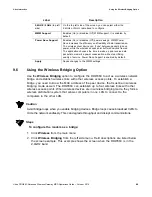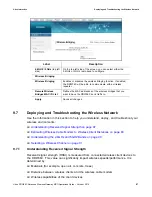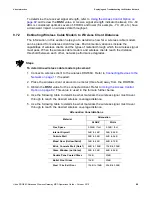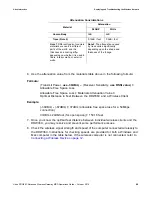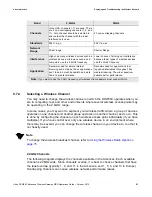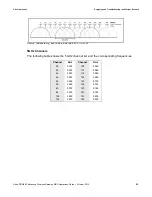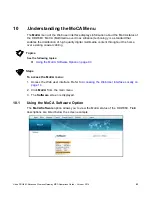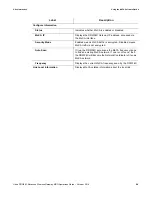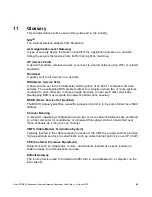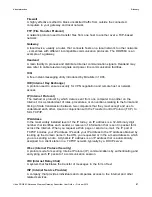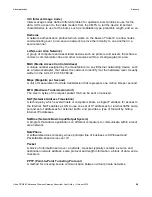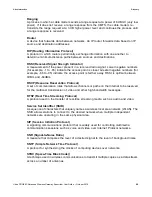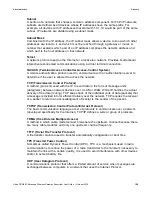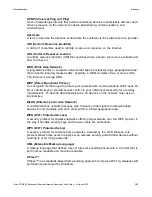
Ubee Interactive
Glossary
Ubee DDW36C Advanced Wireless Gateway Subscriber User Guide • October 2015
100
Subnet
A portion of a network that shares a common address component. On TCP/IP networks,
subnets are defined as all devices whose IP addresses have the same prefix. For
example, all devices with IP addresses that start with 10.1.10 would be part of the same
subnet. IP networks are divided using a subnet mask.
Subnet Mask
Combined with the IP address, the IP subnet mask allows a device to know which other
addresses are local to it, and which must be reached through a gateway or router. A
number that explains which part of an IP address comprises the network address and
which part is the host address on that network.
Telnet
A network protocol used on the Internet or a local area network. Provides bi-directional
interactive text-oriented communications using a virtual terminal connection.
TACACS (Terminal Access Controller Access-Control System)
A remote authentication protocol used to communicate with an authentication server to
determine if the user is allowed to access the network.
TCP (Transmission Control Protocol)
A method (protocol) used with the IP to send data in the form of message units
(datagrams) between network devices over a LAN or WAN. While IP handles the actual
delivery of the data (routing), TCP keeps track of the individual units of data (packets) that
a message is divided into for efficient delivery over the network. TCP requires the receiver
of a packet to return an acknowledgment of receipt to the sender of the packet.
TCP/IP (Transmission Control Protocol/Internet Protocol)
The basic communication language or set of protocols to communicate over a network
(developed specifically for the Internet). TCP/IP defines a suite or group of protocols.
TDMA (Time Division Multiple Access)
A method in which cable modems must time-share the upstream channel because there
are many cable modems and only one upstream channel frequency.
TFTP (Trivial File Transfer Protocol)
A file transfer protocol used to transfer automatically configuration or boot files.
TPC (Transmit Power Control)
Sometimes called Dynamic Power Control (DPC), TPC is a mechanism used in radio
communications to reduce the power of a radio transmitter to the minimum necessary to
maintain the link with a certain quality. It is used to avoid interference with other devices
and/or to extend battery life.
UDP (User Datagram Protocol)
A communications protocol that offers a limited amount of service when messages are
exchanged between computers in a network that uses the Internet Protocol.

